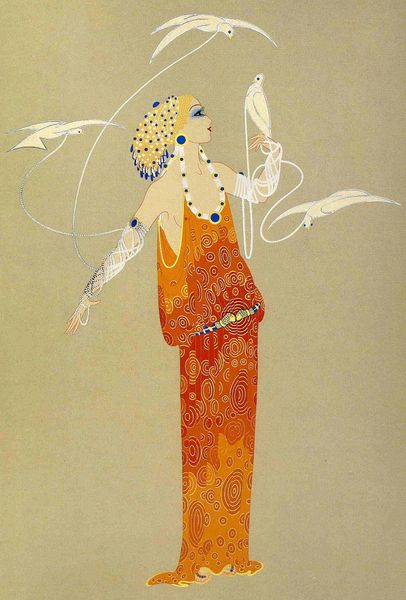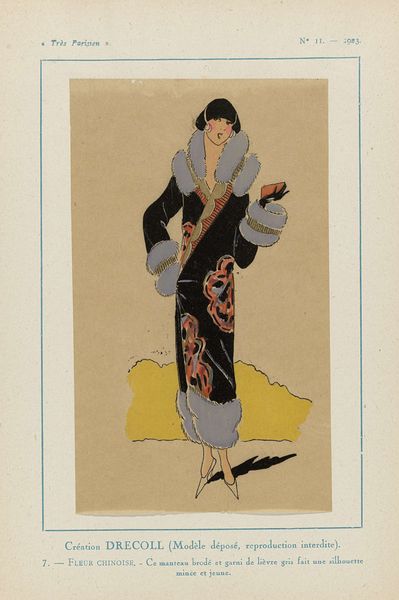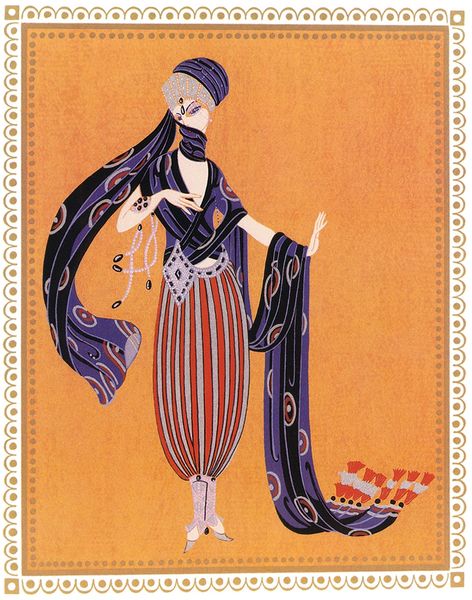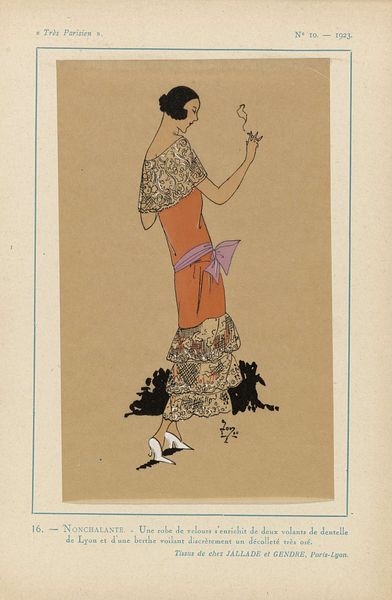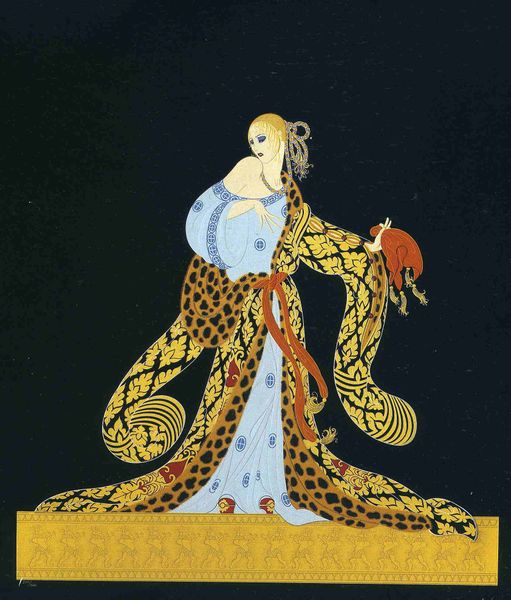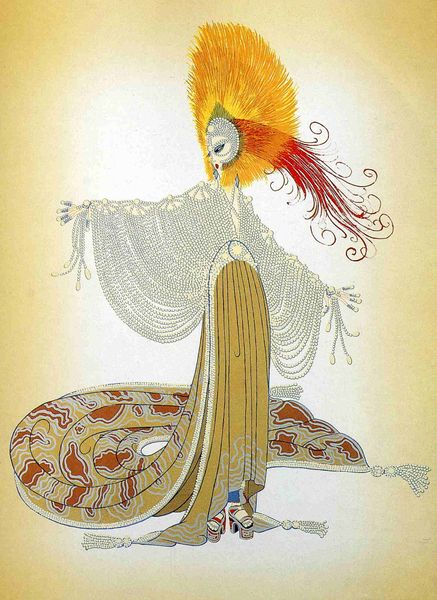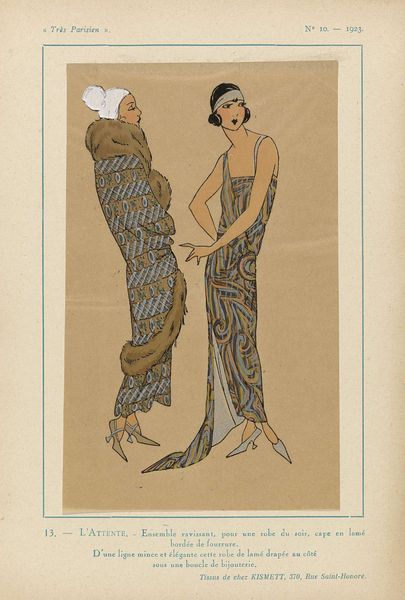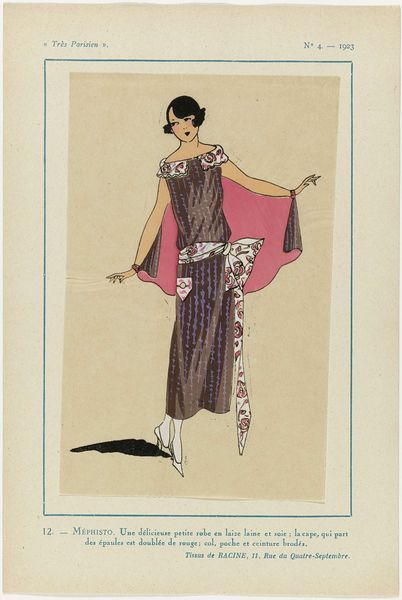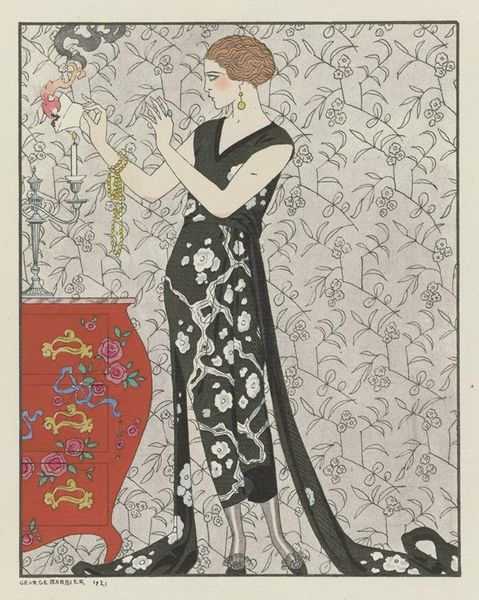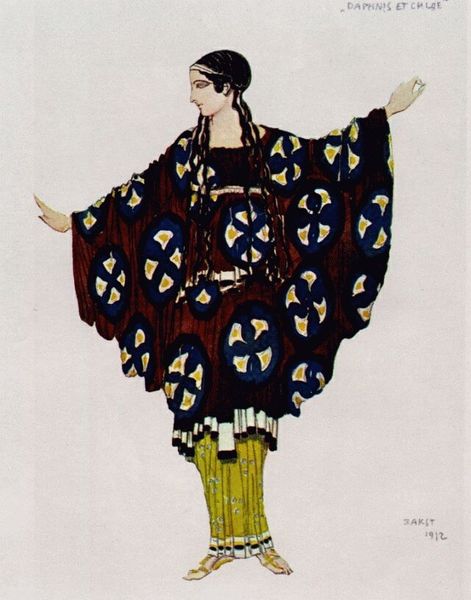
#
portrait
#
art-deco
#
fashion and textile design
#
figuration
#
historical fashion
#
costume
#
symbolism
#
decorative-art
#
decorative art
Copyright: Erte,Fair Use
Editor: So, this is Erté’s *Feather Gown*, from the Art Deco period. It’s an illustration, quite striking, really. I’m immediately drawn to the juxtaposition of the sleek, almost severe silhouette of the woman against the vibrant, almost riotous explosion of color and texture in her gown. How would you interpret this piece? Curator: Erté often worked with strong symbols to reflect the changing moods of his time. Look at the use of peacock feathers – a recurring motif in Art Deco. What does the peacock signify to you? Editor: I guess I associate them with opulence, maybe even a kind of decadent pride? Curator: Exactly. The peacock has historically been a symbol of royalty, beauty, and immortality. But in the context of the post-World War I era, could it also be interpreted as a symbol of resilience and rebirth, a desire to flaunt beauty in the face of loss? Editor: That’s an interesting point. And what about the stylized grapes overhead? They feel very deliberate. Curator: Grapes, of course, are linked to Bacchus, the god of wine and revelry, celebration even. Erté is layering meanings here. We have this potent mix of classical allusions and contemporary anxieties, expressed through fashion, a key medium for the Art Deco aesthetic. Do you feel there's a tension between these different elements? Editor: Absolutely, there’s a push and pull. It’s as though he's using these traditional symbols, but almost ironically. I hadn't quite seen it that way before. Thank you. Curator: Symbolism is always fluid, shaped by context. The act of observation is to peel the layers, rediscovering cultural connections of past.
Comments
No comments
Be the first to comment and join the conversation on the ultimate creative platform.
